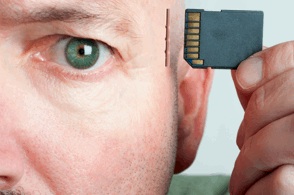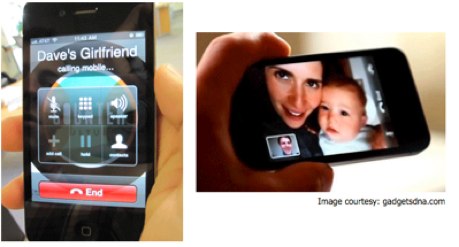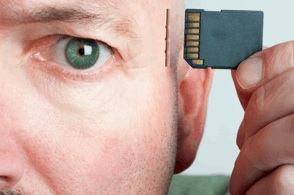Editor’s note: This guest post is written by Dmitry Dragilev, the lead marketer at ZURB, an interaction design firm whose clients have included Facebook, eBay, Yahoo, NYSE, Britney Spears, and Zazzle. They are also behind the Web notation products Notable and Bounce.

Ever read a great book? What do you remember about it? Maybe a few dramatic moments, some wild story twists, and most definitely the ending. Your product is just like a book. You’re telling a story to your customers and they’ll remember only a select few moments from what you tell them. What are these moments? Can you use these moments to plant a memory in a customer’s mind?
There are millions of books, courses and talks out there about building great products online. An awful lot focus on “user experience” as a silver bullet to delighting customers and driving revenue for businesses. Everyone gets caught up thinking it’s user experience they need to worry about, but it’s what they remember about their experience that’s critical. Their memory is what they’ll draw on to tell other people about it. Their memory is what they’ll project into the future. We should focus on making experiences happen that plant memories in people’s heads, like in Christopher Nolan’s film Inception.
It turns out there are three different kinds of moments in your story customers remember: transitions, Wow moments, and endings.
How to plant a memory
There are three particular kinds of experiences capable of turning an ordinary moment into a memory that will stick in your customer’s head. Focusing attention on these three experiences will help you create memorable products.
1. Transitions

These are similar to those surprising plot twists in a story. Giving customers one sensation and then transitioning to another causes a change customers will recognize and are surprisingly likely to remember. Transitions need a clear end and a new beginning, which will trigger the right-to-left-brain transition and form a memory. Here are some examples of memorable transitions that reinforce the core value of each product:
● Ever Skype with your grandparents in a remote village in the middle of nowhere? Remember how their still image turned into video for the first time? That’s hot! You’ll anticipate this every time you Skype now.
● Have you tried to use Facetime on the iPhone yet? That initial call transition to the high quality video of the person on the other side is extremely memorable. This is something you’ll be mentioning to your coworkers the next day.

● You know how when you type a city into Google Earth and watch the globe spin around to the country it is in and then zoom into the city? That transition is what you probably mentioned to others when you first described the app.

2. ‘WOW!’ Moments
Ever have a moment when you just can’t put down the book you’re reading? You’ve got to finish the chapter you’re on. The same happens with a product. Very little of what you create for a customer will ever be remembered by them. They will only remember the peak experiences they have and refer back to them to sum up their feelings about your product. Here are some examples of peak moments that give customers a great story to pass along to their friends:
● Ever trip over your MacBook Pro power chord? Remember how the magnetic power cord came out from your laptop without bringing it crashing down to the floor? “Wow! Thank you Apple!”
● Do you remember the first time you won an auction on eBay and got your favorite gadget for half the price it would cost you in the store? Do you still tell this story to all of your family and friends?
● Ever find that awesome movie from your high school years on Netflix and stream it right away? Were you surprised at how good the movie looked?
● I’m continually impressed each time I open Google Maps on my iPhone and Google something in the area, then hit directions and it fills in Current Location > Search Result and just gets me there, by car or walking.
● Remember the first time you used Picasa? The first promise Picasa had was: “Find all the photos you forgot you had.” The first run experience delivered exactly that for a disorganized user like me. I rediscovered all sorts of ‘lost’ photos, like an unexpected walk down memory lane.
3. Endings
If you’ve read a novel you probably remember the ending. But how often do we worry about how our customers’ experiences with a product ends? That last impression turns out to be very important. Endings can put a positive spin on a negative experience or take a positive experience and ruin the whole thing. People remember endings. Here are a few examples of what we’re talking about:
● Good ending: Becoming a Mayor in Foursquare. What an awesome ending to your hard work of check ins. Folks get excited about this.
● Bad ending: You’ve been checking in for months and have not received any messages or earned anything for doing it. You’re sick of competing with others without any reward and so you give up.
● Good ending: You contact the tech expert on Crossloop and get your computer virus removed in 10 minutes. You’ll definitely be telling others about this experience.
● Bad ending: You contact a tech expert to resolve a problem and you get no response for days. By that time you’ve given up on the service all together.
● Good ending: You click Google Docs Save and Close button and know that: “Certainty I won’t lose my doc!”
● Bad ending: You click the Close button on a cloud app doc and are not sure if your changes were saved.
● Good ending: Flickr’s Contact updates provide a never-ending ending, a continual positive spin on our initial investment of putting our own pictures in there
● Bad ending: You keep putting pictures online and don’t hear about any responses to your pictures for months.
These examples above form memories in customers’ minds that sell these products over and over again. If you want your product to sell you’ve got to start with focusing on transitions, Wow moments, and endings to make it stick in a customer’s mind. How sure are you that your customers will tell others about these moments versus another one you’d rather they forget?
Like the author of a book, you are not just making a product or providing a good user experience, you are giving people a story that will plant memories, and those memories will drive their behavior in the future. Make sure they have good ones.
